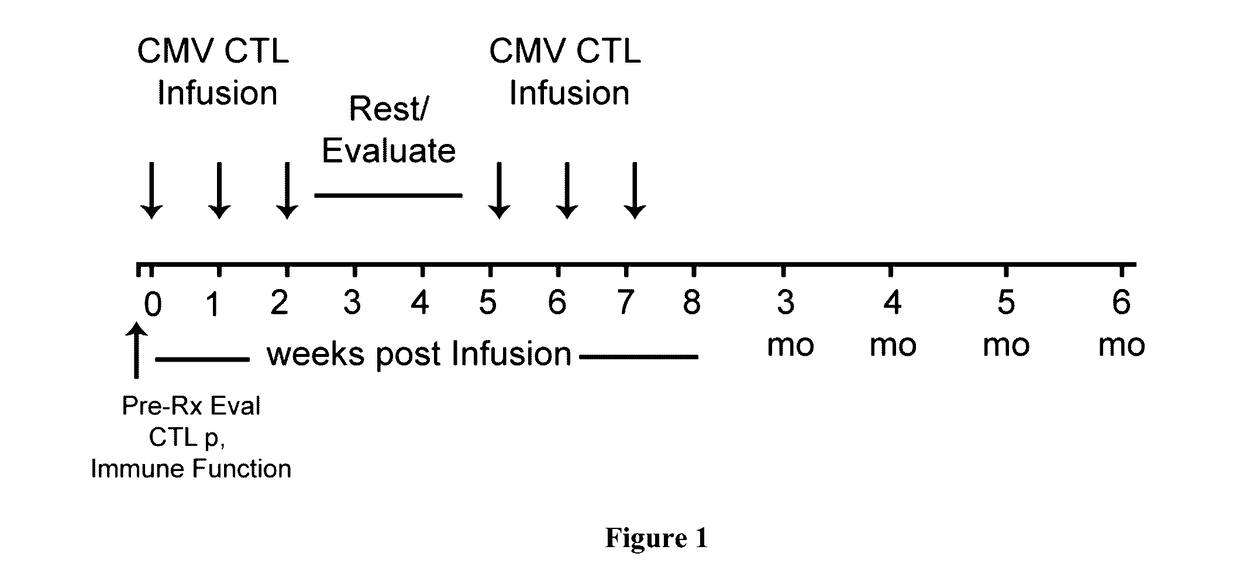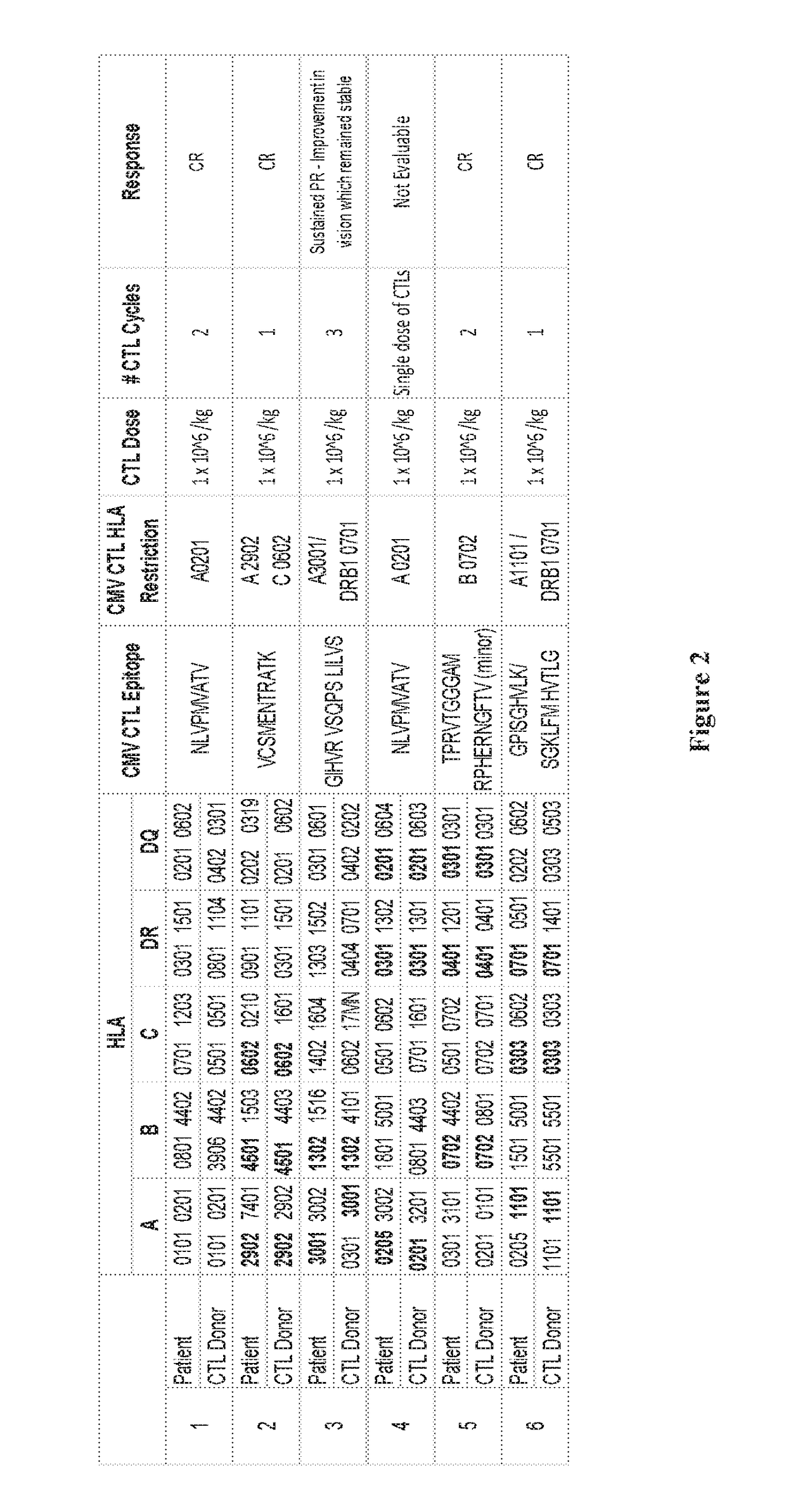Methods of Treating CMV Retinitis by T Cell Therapy
a technology of cytomegalovirus and retinopathy, which is applied in the direction of antibody medical ingredients, dsdna viruses, drug compositions, etc., can solve the problems of human eye damage, pathogen-mediated ocular inflammation, and current antiviral therapies that carry significant toxicities when administered for prolonged periods
- Summary
- Abstract
- Description
- Claims
- Application Information
AI Technical Summary
Benefits of technology
Problems solved by technology
Method used
Image
Examples
Embodiment Construction
[0064]The present invention relates to methods of treating CMV (cytomegalovirus) retinitis in a human patient who is infected with HIV. The present invention further relates to methods of treating CMV retinitis in a human patient who has been the recipient of a solid organ transplant. The invention provides a T cell therapy method that is effective in treating CMV retinitis in a human patient with low or no toxicity, wherein the human patient is infected with HIV or has been the recipient of a solid organ transplant.
[0065]In one aspect, provided herein are methods of treating CMV retinitis in a human patient in need thereof, comprising administering to the human patient a population of allogeneic T cells comprising CMV-specific T cells; wherein the human patient is infected with HIV. In various embodiments, the human patient has AIDS (acquired immune deficiency syndrome).
[0066]In another aspect, provided herein are methods of treating CMV retinitis in a human patient in need thereof...
PUM
| Property | Measurement | Unit |
|---|---|---|
| median time | aaaaa | aaaaa |
| time | aaaaa | aaaaa |
| volume | aaaaa | aaaaa |
Abstract
Description
Claims
Application Information
 Login to View More
Login to View More - R&D
- Intellectual Property
- Life Sciences
- Materials
- Tech Scout
- Unparalleled Data Quality
- Higher Quality Content
- 60% Fewer Hallucinations
Browse by: Latest US Patents, China's latest patents, Technical Efficacy Thesaurus, Application Domain, Technology Topic, Popular Technical Reports.
© 2025 PatSnap. All rights reserved.Legal|Privacy policy|Modern Slavery Act Transparency Statement|Sitemap|About US| Contact US: help@patsnap.com



